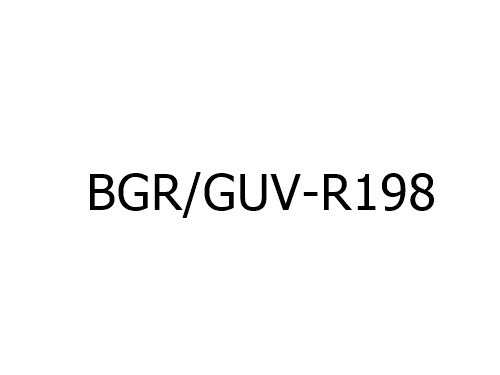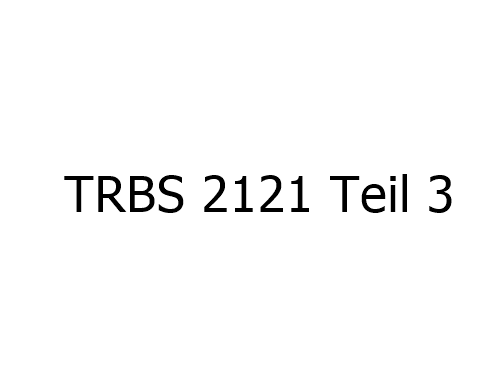We won't leave you alone when you have questions about rules, regulations, standards or laws. We are happy to advise you. You are welcome to contact us by email (anfrage@psa-check.com) or by phone (+49 2309 60099-67). We not only test, but for us a test service means to accompany you from the drafting to the end or to carry out these activities.
BGR / GUV-R 199 / DGUV rule 112-199
Rescue from highs and lows with personal fall equipment
Trade association rules for safety and health at work (BGR / GUV-R)
DGUV rules compile content related to areas, work processes or workplaces. They explain the specific preventive measures with which the obligations to prevent accidents at work, occupational diseases and work-related health hazards can be fulfilled.
DGUV rules also show where there are no occupational safety or accident prevention regulations, ways in which work accidents, occupational diseases and work-related health hazards can be avoided. In addition, they bundle the experience gained from the prevention work of the accident insurance institutions.
Due to their special development process and their content orientation towards specific operational processes or areas of application (industry / operating mode / area orientation), DGUV rules are technical recommendations for ensuring safety and health. They have a high practical relevance and knowledge value, are considered by the majority of the circles involved to be necessary and can therefore be used as a suitable guideline for operational preventive action. There is no presumption of conformity with DGUV rules.
DGUV rules also show where there are no occupational safety or accident prevention regulations, ways in which work accidents, occupational diseases and work-related health hazards can be avoided. In addition, they bundle the experience gained from the prevention work of the accident insurance institutions.
Due to their special development process and their content orientation towards specific operational processes or areas of application (industry / operating mode / area orientation), DGUV rules are technical recommendations for ensuring safety and health. They have a high practical relevance and knowledge value, are considered by the majority of the circles involved to be necessary and can therefore be used as a suitable guideline for operational preventive action. There is no presumption of conformity with DGUV rules.
PSA-Check Poelmann acts according to the new BGR / GUV-R 199 and carries out all prescribed tests for you.
scope of application
This rule applies to the selection and use of personal fall protection equipment for rescuing from heights and depths.
This rule can be deviated from in individual cases in order to save human life (see, for example, accident prevention regulation "Fire Brigades" (GUV C53)).
The selection and use of personal protective equipment against falls are specified in the rule "Use of personal protective equipment against falls" (BGR / GUV-R 198).
The selection and use of personal protective equipment for holding is specified in the information "Holding belts and lanyards for holding belts" (BGI / GUV-I 870).
This rule does not apply to the selection and use of other rescue equipment, e.g. breathing apparatus, personal protective equipment against drowning.
This rule applies to the selection and use of personal fall protection equipment for rescuing from heights and depths.
This rule can be deviated from in individual cases in order to save human life (see, for example, accident prevention regulation "Fire Brigades" (GUV C53)).
The selection and use of personal protective equipment against falls are specified in the rule "Use of personal protective equipment against falls" (BGR / GUV-R 198).
The selection and use of personal protective equipment for holding is specified in the information "Holding belts and lanyards for holding belts" (BGI / GUV-I 870).
This rule does not apply to the selection and use of other rescue equipment, e.g. breathing apparatus, personal protective equipment against drowning.
Definitions
In terms of this rule, the following terms are defined:
In terms of this rule, the following terms are defined:
- Personal fall protection equipment for rescuing from heights and depths are rescue systems and belong to the individual protective measures. Rescue systems protect the user or the person to be rescued from falling either by preventing a fall or by catching a free fall during the rescue process. They consist of a compilation of components that include at least one body holding device (eg a rescue belt) and a fastening system that can be connected to a reliable anchorage.
- Fastening systems consist of one or more components that are usually used in the rescue system for the intended application (e.g. connecting elements, rescue lifting device, anchor devices) that are separable or inseparable.
- Rescue systems according to DIN EN 363 are personal fall protection systems through which a person can save himself or others and prevent a free fall. With rescue systems, people can be rescued from an emergency, for example by rappelling up or down.
- Components
according to DIN EN 363
are parts of a system that are supplied by the manufacturer ready for sale with packaging, labeling and information from the manufacturer. The components of rescue systems include, for example:
Rescue belts, rescue loops, rescue lifting devices, descenders, connecting elements and anchor devices.
- Lifebelts according to DIN EN 1497 are body restraint devices and part of rescue systems. They consist of belt straps, fittings or other individual parts that are designed and assembled in such a way that the entire body of the person to be rescued is supported and held in an upright position during the rescue process.
- Rescue loops according to DIN EN 1498 are body restraint devices and part of rescue systems. They consist of belt straps, fittings or other individual parts that are designed and assembled in such a way that the person to be rescued is held in the specified position during the rescue process.
- Rescue lifting devices according to DIN EN 1496 are part of rescue systems with which people can either pull themselves up from a lower to a higher location or be pulled up by a helper.
- Descenders according to DIN EN 341 are components of rescue systems with which people can lower themselves from a higher to a lower location either by themselves or with the help of a second person at a limited speed.
- Lanyard according to DIN EN 354 are part of a rescue system, consisting of rope, webbing or chain with end connections.
- Fasteners according to DIN EN 362 are a connecting component in a rescue system, e.g. snap hooks.
- Anchor devices in combination with abseiling devices, rescue lifting devices connected with a corresponding body holding device that carries the user, protect against falling.
- Attachment options are part of structural systems / facilities / machines with one or more attachment points for attaching or attaching rescue systems.
Source: German Social Accident Insurance eV (DGUV)





